Kenya’s luxury car market tells a fascinating story of wealth, status, and automotive excellence. From Nairobi’s upscale neighborhoods to Mombasa’s coastal estates, the country’s elite drive some of the world’s most prestigious vehicles.
This comprehensive guide explores the most expensive cars in Kenya, revealing what makes them cost millions of shillings and who’s buying them. Whether you’re dreaming big or simply curious about automotive luxury, you’ll discover everything about these remarkable machines.
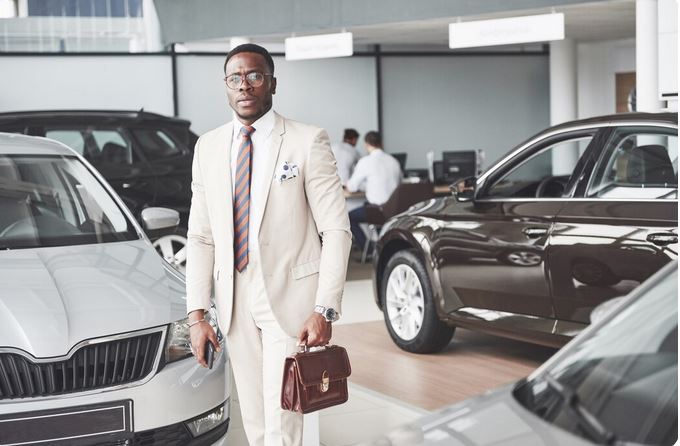
Understanding Kenya’s Luxury Car Market
The high-end automotive segment in Kenya operates differently from mass-market vehicles. Exclusivity, performance, and prestige drive purchasing decisions more than practicality.
What Defines an Expensive Car in Kenya?
Price alone doesn’t make a car expensive in the Kenyan context. Vehicles exceeding KES 10 million typically fall into the luxury category, though true supercars start around KES 30 million.
Import duties significantly inflate costs. Kenya imposes substantial taxes on luxury vehicles, with rates reaching 60-70% of the vehicle’s value according to Kenya Revenue Authority regulations. A car costing USD 200,000 internationally can easily reach KES 50-60 million locally.
Rarity matters tremendously. Limited production runs, special editions, and bespoke customizations push prices into stratospheric territory.
Maintenance and running costs separate luxury from ordinary vehicles. Annual servicing for high-end cars can exceed KES 2-5 million, with some exotic models requiring specialized technicians flown in from abroad.
The Luxury Car Buyer Profile
Kenya’s luxury car market caters to diverse buyers. Business magnates, politicians, diplomats, and successful entrepreneurs form the core demographic.
Age doesn’t always predict luxury purchases. While many buyers are 40-60 years old, younger tech entrepreneurs and entertainment personalities increasingly join this exclusive club.
Corporate purchases account for significant volume. Companies acquire luxury vehicles for executive transport and client impressions, treating them as business investments.
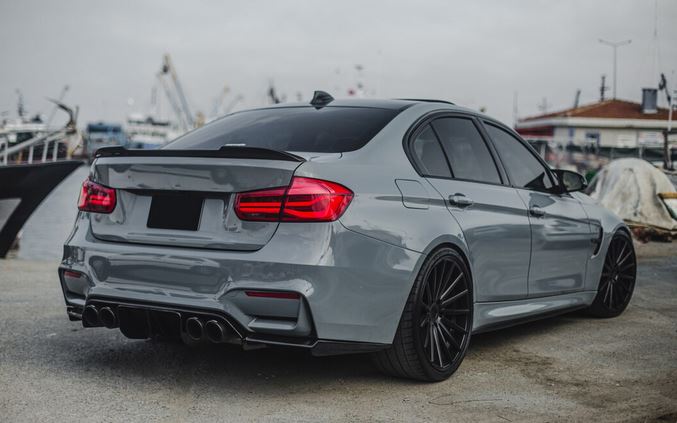
Import Duties and Total Ownership Costs
Understanding the true cost requires looking beyond sticker prices. Import duty, excise tax, VAT, and registration fees combine to nearly triple a vehicle’s international price.
A USD 150,000 vehicle incurs approximately:
- Import duty: 25% (KES 5.1M)
- Excise duty: 20% (KES 4.1M)
- VAT: 16% (KES 4.5M)
- Total landed cost: KES 27-30M
Insurance premiums reach 4-6% of vehicle value annually. For a KES 40 million car, expect KES 1.6-2.4 million yearly in comprehensive coverage.
Depreciation hits luxury vehicles harder. According to Kelley Blue Book, luxury cars lose 50-60% of their value within five years, compared to 40-45% for mainstream vehicles.
Top 20 Most Expensive Cars in Kenya
These automotive masterpieces represent the pinnacle of engineering, luxury, and exclusivity available on Kenyan roads.
Ultra-Luxury Segment (KES 50M+)
1. Rolls-Royce Phantom (KES 100M – 150M)
The Phantom remains Kenya’s ultimate status symbol. This hand-built masterpiece combines 563 horsepower with whisper-quiet luxury that redefines automotive excellence.
Every detail screams perfection. The Spirit of Ecstasy hood ornament automatically retracts when you lock the doors. Starlight headliner features 1,340 fiber-optic lights creating a customizable constellation.
Kenyan owners include top-tier business leaders and diplomats. The extended wheelbase version provides limousine-like rear space, perfect for chauffeur-driven experiences.
Maintenance costs exceed KES 5 million annually. Specialized servicing requires factory-trained technicians, with major services involving parts shipped directly from Goodwood, England.
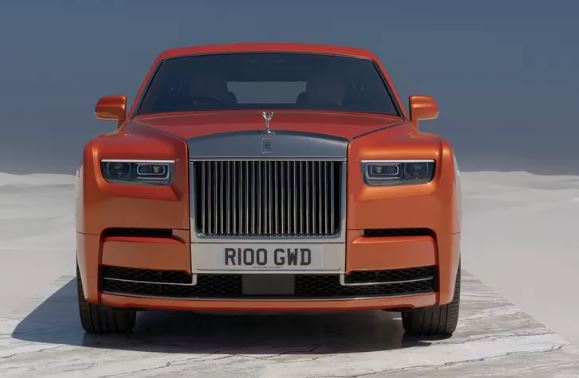
2. Bentley Mulsanne (KES 85M – 120M)
Bentley’s flagship sedan delivers 505 horsepower from its legendary 6.75-liter V8 engine. This British icon combines race-bred performance with drawing-room comfort.
The interior showcases exceptional craftsmanship. Each vehicle requires 400 hours of hand-assembly, with wood veneers book-matched for perfect symmetry.
Several Kenyan billionaires favor Mulsannes for personal use. The commanding road presence and exclusivity make it ideal for making memorable entrances.
Fuel consumption averages 5-7 km/l. At Kenyan fuel prices, expect monthly fuel costs exceeding KES 100,000 for regular use.
3. Mercedes-Maybach S-Class (KES 75M – 95M)
Mercedes’ ultra-luxury sedan redefines executive transport. The Maybach stretches 5.5 meters long, with rear passengers enjoying first-class airline-style seating.
Technology integration is stunning. The Burmester 4D surround sound system features 31 speakers, while massage seats offer hot-stone therapy simulation.
Corporate executives prefer Maybachs for business transportation. The rear executive seats recline to 43.5 degrees, transforming the cabin into a mobile office.
Kenyan roads pose minimal challenges. Adaptive air suspension and advanced driver assistance systems handle everything from smooth highways to bumpy side streets.
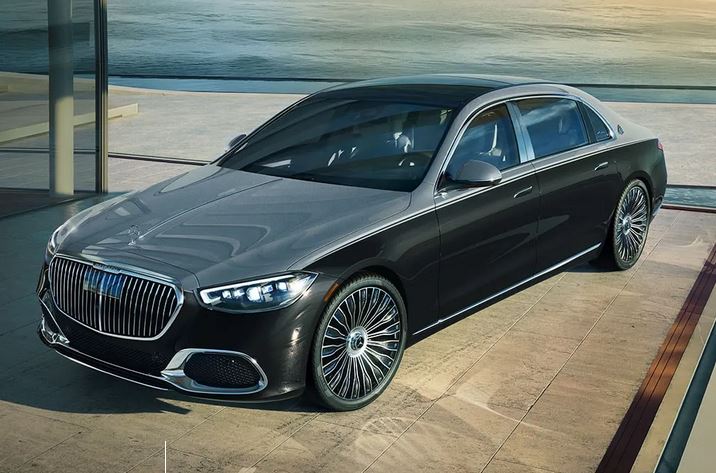
4. Lamborghini Aventador SVJ (KES 80M – 110M)
Pure Italian fury defines the Aventador SVJ. Its 770-horsepower V12 engine rockets this supercar to 100 km/h in 2.8 seconds with a spine-tingling exhaust note.
Active aerodynamics adjust in real-time. The ALA 2.0 system optimizes downforce and drag, delivering track-ready performance that few Kenyan roads can properly showcase.
Young entrepreneurs and entertainment moguls gravitate toward Lamborghinis. The dramatic scissor doors and aggressive styling guarantee attention everywhere.
Ground clearance remains problematic. Speed bumps and rough roads require extreme caution, limiting daily usability despite the astronomical price.
5. Ferrari 812 Superfast (KES 75M – 100M)
Ferrari’s front-engine V12 flagship produces 789 horsepower. This GT supercar balances extreme performance with surprising long-distance comfort.
The naturally aspirated engine delivers visceral thrills. Peak power arrives at 8,500 RPM, with a Formula 1-derived soundtrack that enthusiasts dream about.
Kenya hosts several Ferrari owners. Monthly owners’ club drives to scenic locations like Naivasha create exclusive networking opportunities.
Servicing requires specialized knowledge. Authorized service centers are limited, with major maintenance potentially requiring vehicle shipment to South Africa.
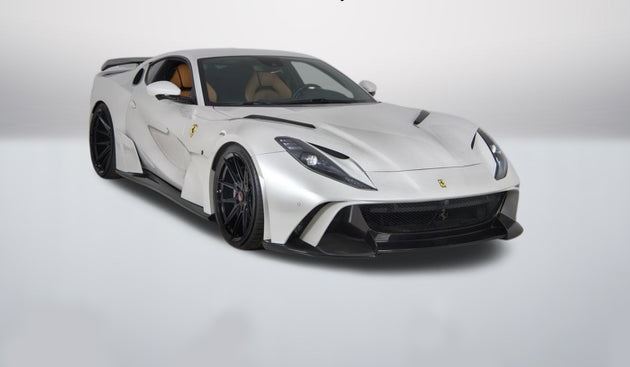
Premium Luxury Segment (KES 30M – 50M)
6. Porsche 911 Turbo S (KES 45M – 55M)
The 911 Turbo S represents automotive perfection. Its 640-horsepower flat-six engine delivers supercar performance with surprising daily usability.
All-wheel drive traction astonishes. Launch control enables consistent 2.6-second 0-100 km/h runs, embarrassing cars costing twice as much.
Successful professionals favor the 911’s understated elegance. Unlike flashier exotics, it blends into traffic while delivering world-class performance.
Running costs stay relatively reasonable. Porsche reliability and efficient service networks make ownership less demanding than Italian alternatives.
7. Range Rover SVAutobiography (KES 40M – 50M)
Land Rover’s flagship combines luxury with genuine capability. This opulent SUV navigates Nairobi traffic as easily as upcountry terrain.
The supercharged V8 produces 557 horsepower. Despite weighing over 2.5 tons, acceleration remains brisk with commanding road presence.
Kenyan terrain favors Range Rovers. Excellent ground clearance, terrain response systems, and air suspension handle diverse conditions effortlessly.
Status appeal runs deep. The Range Rover nameplate carries significant prestige across Kenya, from business districts to safari lodges.

8. BMW Alpina B7 (KES 38M – 48M)
Alpina transforms BMW’s 7 Series into something extraordinary. The hand-built 608-horsepower V8 delivers M-car performance with limousine refinement.
Exclusivity defines Alpina ownership. Limited production numbers ensure you’ll rarely encounter another, maintaining uniqueness that mass-produced luxury can’t match.
Tech-savvy executives appreciate the balance. It provides supercar-rivaling acceleration without the attention-drawing drama of exotic badges.
Service accessibility exceeds rare exotics. BMW’s established Kenyan network handles most maintenance, though Alpina-specific parts require special ordering.
9. Maserati Quattroporte GTS (KES 35M – 45M)
Italian passion meets four-door practicality. The Ferrari-derived V8 produces 523 horsepower while exhaust notes announce your arrival blocks away.
Interior luxury rivals established German competitors. Hand-stitched leather, wood trim, and Italian craftsmanship create an environment that feels genuinely special.
Style-conscious buyers love Maseratis. The distinctive trident badge and flowing design language stand apart from more common luxury sedans.
Reliability concerns persist. Maserati’s reputation for electrical gremlins and higher-than-average maintenance costs requires consideration.
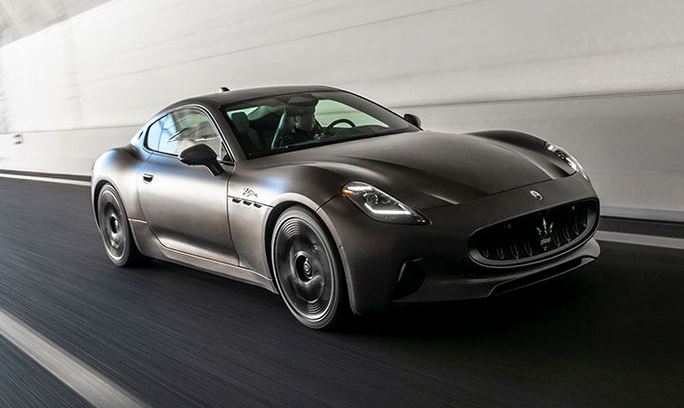
10. Audi RS7 Sportback (KES 32M – 42M)
Audi’s performance flagship combines supercar speed with sleek practicality. The twin-turbo V8 generates 591 horsepower, launching this hatchback to 100 km/h in 3.6 seconds.
The liftback design adds unexpected versatility. Massive cargo capacity means you can carry weekend luggage or golf clubs without compromising performance.
Understated styling appeals to low-key achievers. Unless you know cars well, the RS7 looks like an upscale Audi rather than a six-figure performance machine.
All-wheel drive quattro system provides confidence. Kenya’s occasional rain doesn’t diminish performance, unlike rear-wheel-drive alternatives.
High-End Luxury Segment (KES 20M – 30M)
11. Mercedes-AMG G63 (KES 30M – 38M)
The G-Wagon transcends automotive status to become cultural icon. Its 577-horsepower twin-turbo V8 propels this brick-shaped SUV to 100 km/h in 4.5 seconds.
Kenyan roads reveal its true character. Exceptional ground clearance, three locking differentials, and robust construction handle anything thrown at them.
Social media influence boosted popularity. Young entrepreneurs, musicians, and influencers display G-Wagons as symbols of success across Instagram and TikTok.
Fuel consumption horrifies the practical-minded. Expect 4-6 km/l in mixed driving, meaning monthly fuel costs easily exceed KES 150,000.

12. Porsche Cayenne Turbo S E-Hybrid (KES 28M – 35M)
Porsche’s hybrid flagship delivers shocking performance. Combined petrol-electric output reaches 670 horsepower, making this SUV faster than many sports cars.
Hybrid technology provides surprising efficiency. Electric-only range of 40 km suits Nairobi commutes, dramatically reducing daily fuel costs despite immense performance potential.
Versatility impresses families. Five-seat capacity, large cargo area, and genuine off-road capability make it a practical supercar alternative.
Charging infrastructure remains limited. Home installation of Level 2 chargers costs KES 200,000-400,000, necessary for maximizing hybrid benefits.
13. BMW M8 Competition Gran Coupe (KES 26M – 32M)
BMW’s ultimate four-door delivers 617 horsepower. The twin-turbo V8 combines M division’s racing heritage with executive sedan sophistication.
Performance borders on excessive. In a country where highways rarely permit sustained high speeds, the M8’s capabilities remain largely theoretical.
Stylish professionals appreciate the sleek profile. The four-door coupe silhouette balances practicality with emotional design rare in performance sedans.
Running costs match the performance. Expect KES 500,000-800,000 annually for routine maintenance, tires, and consumables.
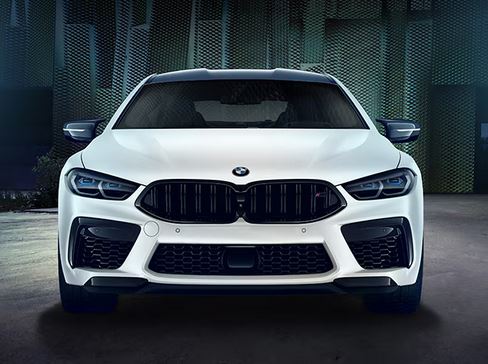
14. Lexus LX 600 (KES 25M – 30M)
Toyota’s luxury division delivers uncompromising reliability. The twin-turbo V6 produces 409 horsepower while legendary Lexus dependability ensures peace of mind.
Off-road capability impresses. Built on the Land Cruiser platform, the LX handles Kenya’s challenging roads with confidence rarely matched by European alternatives.
Conservative buyers favor Lexus quality. Lower depreciation and exceptional reliability offset higher purchase prices compared to similarly priced competitors.
Resale value remains strong. Lexus vehicles hold value better than most luxury brands, making them smart long-term investments.
15. Mercedes-AMG S63 (KES 24M – 30M)
The S63 represents AMG’s approach to luxury performance. Its 603-horsepower twin-turbo V8 provides explosive acceleration wrapped in executive sophistication.
Interior technology astounds. The MBUX infotainment system, augmented reality navigation, and Level 3 autonomous driving capabilities showcase Mercedes’ innovation.
Business leaders appreciate the dual personality. Comfort mode delivers serene luxury while Sport+ unleashes performance rivaling dedicated sports cars.
Technology complexity poses concerns. Advanced systems require specialized diagnostic equipment, limiting service options outside authorized dealerships.
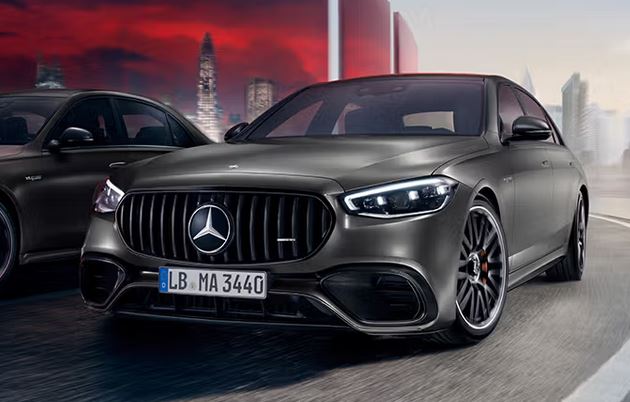
16. Aston Martin DB11 (KES 23M – 28M)
British elegance meets GT performance. The DB11’s twin-turbo V12 produces 630 horsepower while hand-crafted interior details showcase Aston Martin’s artisan heritage.
Design timelessness ensures longevity. Unlike trend-chasing competitors, the DB11’s proportions and styling will remain stunning decades from now.
Collectors favor Aston Martins. Limited production numbers and James Bond associations provide cultural cachet beyond mere transportation.
Practicality takes a back seat. The DB11 functions as a grand tourer, not a daily driver, with limited rear seats and firm suspension.
17. Porsche Panamera Turbo S E-Hybrid (KES 22M – 28M)
Porsche’s four-door flagship delivers 690 combined horsepower. The plug-in hybrid system provides guilt-free performance with 50 km electric range.
Executive appeal runs strong. The Panamera offers supercar performance with rear-seat luxury suitable for business meetings.
Handling defies physics. Despite weighing over 2.3 tons, the Panamera corners with precision that shames dedicated sports cars.
Hybrid complexity requires consideration. Battery replacement costs can reach KES 2-3 million after 8-10 years, though most buyers upgrade before this becomes necessary.
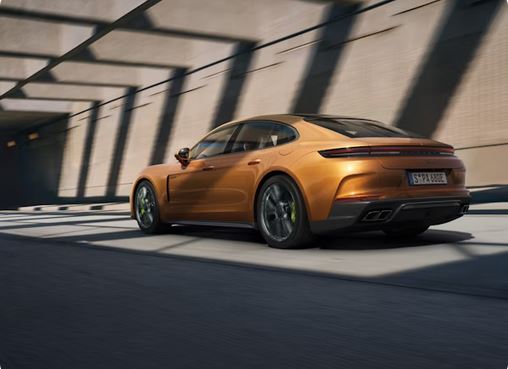
18. Land Rover Defender 110 X (KES 20M – 25M)
The reimagined Defender balances heritage with modernity. Its distinctive design and genuine off-road capability appeal to adventurous luxury buyers.
Kenyan conditions suit the Defender perfectly. Excellent approach and departure angles, wading depth, and robust construction handle upcountry adventures confidently.
Customization options are extensive. Land Rover offers numerous packages, allowing owners to create unique specifications rarely seen on other vehicles.
Reliability improvements over predecessors matter. Modern engineering addresses historical Land Rover quality concerns, though long-term durability remains to be proven.
19. BMW X7 M60i (KES 20M – 24M)
BMW’s largest SUV delivers seven-seat luxury. The twin-turbo V8 produces 523 horsepower while spacious interior accommodates families in first-class comfort.
Third-row practicality surprises. Unlike token third rows in competitors, the X7 provides genuinely usable rear seating for adults.
Family-focused executives choose the X7. School runs and business meetings both benefit from its combination of prestige and versatility.
Size challenges emerge. Nairobi’s tight parking and narrow side streets test the X7’s 5.1-meter length and 2-meter width.
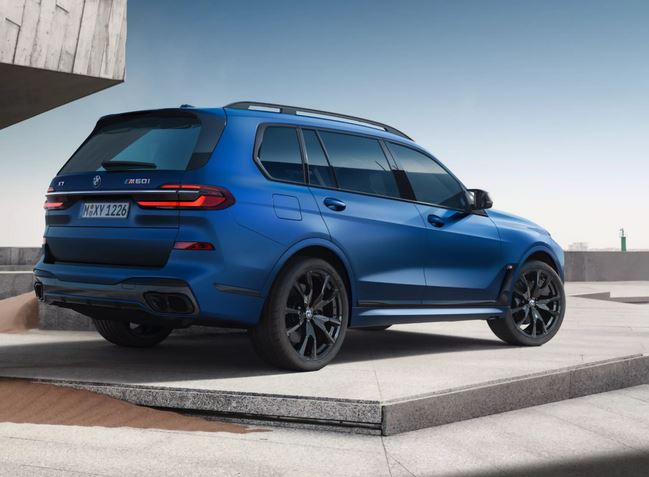
20. Mercedes-AMG GLE 63 S Coupe (KES 19M – 23M)
The GLE Coupe combines SUV practicality with coupe styling. Its 603-horsepower V8 and aggressive design appeal to drivers prioritizing aesthetics.
Performance exceeds expectations. Despite SUV dimensions, the GLE 63 S accelerates to 100 km/h in 3.8 seconds with flat-cornering handling.
Controversial styling polarizes opinions. The sloping roofline sacrifices rear headroom and cargo space for emotional design that some love, others hate.
AMG ownership costs mirror performance. Expect maintenance expenses comparable to other AMG models, with brake replacements alone costing KES 300,000-500,000.
Comparison Table: Top 20 Expensive Cars
| Rank | Model | Price Range (KES) | Horsepower | 0-100 km/h | Fuel Economy | Best Feature |
| 1 | Rolls-Royce Phantom | 100M – 150M | 563 | 5.1s | 6 km/l | Ultimate luxury |
| 2 | Bentley Mulsanne | 85M – 120M | 505 | 5.3s | 5-7 km/l | Handcrafted V8 |
| 3 | Mercedes-Maybach S-Class | 75M – 95M | 496 | 4.9s | 9 km/l | Tech integration |
| 4 | Lamborghini Aventador SVJ | 80M – 110M | 770 | 2.8s | 5 km/l | Raw performance |
| 5 | Ferrari 812 Superfast | 75M – 100M | 789 | 2.9s | 6 km/l | V12 engine |
| 6 | Porsche 911 Turbo S | 45M – 55M | 640 | 2.6s | 10 km/l | Daily supercar |
| 7 | Range Rover SVAutobiography | 40M – 50M | 557 | 5.4s | 7-9 km/l | Off-road luxury |
| 8 | BMW Alpina B7 | 38M – 48M | 608 | 3.6s | 8 km/l | Rare exclusivity |
| 9 | Maserati Quattroporte GTS | 35M – 45M | 523 | 4.7s | 7 km/l | Italian style |
| 10 | Audi RS7 Sportback | 32M – 42M | 591 | 3.6s | 9 km/l | Versatile speed |
| 11 | Mercedes-AMG G63 | 30M – 38M | 577 | 4.5s | 4-6 km/l | Icon status |
| 12 | Porsche Cayenne Turbo S E-Hybrid | 28M – 35M | 670 | 3.8s | 15 km/l* | Hybrid power |
| 13 | BMW M8 Competition | 26M – 32M | 617 | 3.2s | 8 km/l | M performance |
| 14 | Lexus LX 600 | 25M – 30M | 409 | 6.9s | 7-9 km/l | Reliability |
| 15 | Mercedes-AMG S63 | 24M – 30M | 603 | 3.5s | 8 km/l | Tech luxury |
| 16 | Aston Martin DB11 | 23M – 28M | 630 | 3.7s | 7 km/l | Timeless design |
| 17 | Porsche Panamera Turbo S E-Hybrid | 22M – 28M | 690 | 3.2s | 14 km/l* | Hybrid GT |
| 18 | Land Rover Defender 110 X | 20M – 25M | 395 | 6.4s | 8-10 km/l | Modern classic |
| 19 | BMW X7 M60i | 20M – 24M | 523 | 4.7s | 8-10 km/l | Family luxury |
| 20 | Mercedes-AMG GLE 63 S Coupe | 19M – 23M | 603 | 3.8s | 7-9 km/l | SUV coupe |
*Combined efficiency with electric assist
Where Wealthy Kenyans Buy Luxury Cars
Acquiring expensive vehicles in Kenya involves specialized channels beyond typical dealerships.
Authorized Dealerships and Exclusive Showrooms
DT Dobie represents multiple luxury brands. As the official importer for Mercedes-Benz, BMW, and Jaguar Land Rover, they provide warranty coverage and authorized service.
Porsche Centre Nairobi opened recently on Mombasa Road. This exclusive facility offers the complete Porsche experience, from test drives to personalized customization consultations.
CMC Motors handles premium brands like Volkswagen’s luxury lineup. Their Isuzu Menlyn showroom caters to high-net-worth individuals seeking exclusive SUVs.
Personal importation remains popular for ultra-rare models. Buyers work with specialized brokers who source specific vehicles internationally, managing shipping and customs clearance.
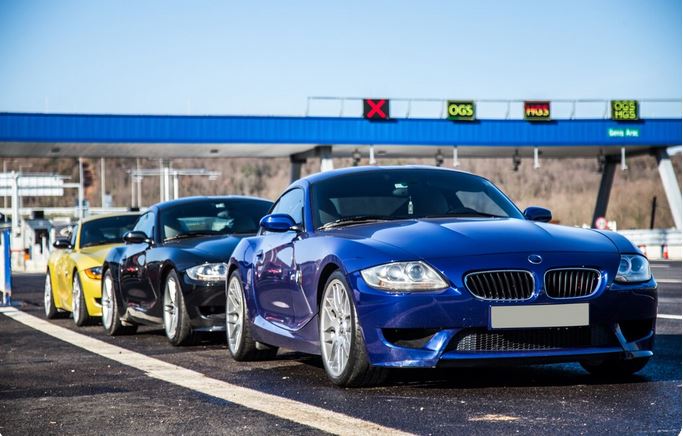
Import Process for Ultra-Luxury Vehicles
Private jets sometimes transport ultra-rare cars. For vehicles worth over USD 500,000, air freight justifies the cost to minimize shipping damage risks.
Documentation requires meticulous attention. According to International Trade Administration, proper customs declarations prevent costly delays and potential seizures.
Customs clearance timelines vary significantly. Standard processing takes 2-4 weeks, though complex cases involving rare models can extend to months.
Financing Options for High-Net-Worth Buyers
Banks rarely finance luxury vehicles directly. Wealthy buyers typically pay cash or leverage other assets rather than take auto loans.
Asset-based lending provides alternatives. High-net-worth individuals secure financing against investment portfolios or property, accessing better rates than traditional auto loans.
Leasing remains uncommon. Kenya’s limited luxury leasing market means most high-end buyers purchase outright, treating vehicles as assets.
Maintaining Expensive Cars in Kenyan Conditions
Luxury vehicle ownership demands specialized care beyond standard maintenance routines.
Specialized Service Centers and Costs
Authorized dealerships charge premium rates. Expect to pay KES 50,000-150,000 for routine services on luxury vehicles, with major services reaching KES 500,000-1 million.
Specialized independents offer alternatives. Shops like Sports Car Garage and European Auto Care provide expertise at 30-40% lower costs than dealerships.
Parts availability creates challenges. Exotic vehicle components often require international ordering, with air freight adding KES 50,000-200,000 to parts costs.
Extended warranties provide peace of mind. For vehicles costing tens of millions, comprehensive warranty coverage justifies its 5-8% annual premium.
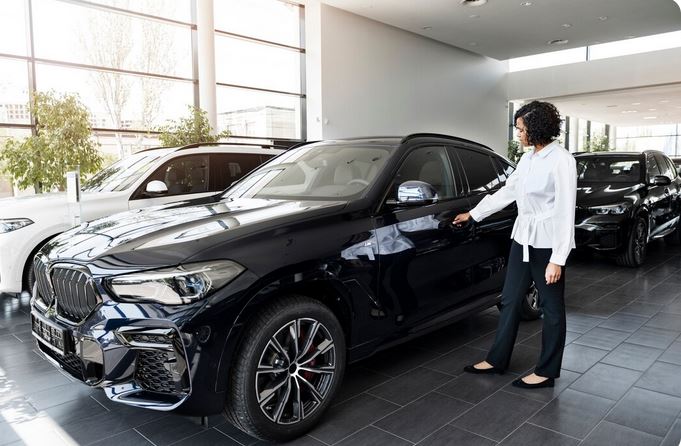
Kenyan Roads and Luxury Car Challenges
Speed bumps pose constant threats. Low-riding supercars require extreme vigilance, with every bump risking expensive underbody damage.
Potholes test suspension systems. Even expensive adaptive dampers struggle with sudden large holes, potentially causing rim damage costing KES 200,000-500,000 per wheel.
Dust infiltration affects electronics. Kenya’s dusty conditions accelerate wear on sensitive components, requiring more frequent cleaning and inspections.
Security concerns influence usage patterns. Expensive cars attract unwanted attention, limiting where owners comfortably park and necessitating enhanced security measures.
Insurance and Security Requirements
Comprehensive coverage is non-negotiable. Premiums reaching KES 2-5 million annually protect multi-million shilling investments from total loss.
Tracking systems come standard. GPS tracking, immobilizers, and 24/7 monitoring services help prevent theft and aid recovery.
Secure parking becomes essential. Homes require fortified garages with advanced security systems, adding KES 500,000-2 million to property security investments.
Investment Perspective: Do Luxury Cars Hold Value?
Understanding depreciation and resale realities helps inform purchase decisions.
Depreciation Rates in Kenya
Luxury cars depreciate faster initially. First-year depreciation averages 25-35%, compared to 15-20% for mainstream vehicles.
Ultra-rare models buck trends. Limited production Ferraris, Lamborghinis, and Rolls-Royces sometimes appreciate, particularly special editions.
Brand matters significantly. Lexus and Porsche maintain value better than Maserati or Jaguar, with documented reliability influencing resale prices.
Best Resale Value Luxury Cars
Porsche 911 models consistently retain value. Their timeless design, strong enthusiast demand, and legendary reliability ensure strong resale prices.
Mercedes G-Class vehicles hold value remarkably. Cultural icon status and robust construction maintain demand even for older examples.
Range Rover SVAutobiography models depreciate moderately. Kenya’s terrain suitability and brand prestige support stronger-than-average resale values.
Limited edition supercars can appreciate. Ferrari special editions, Lamborghini Aventador SVJ, and similar rare models often increase in value as collectibles.
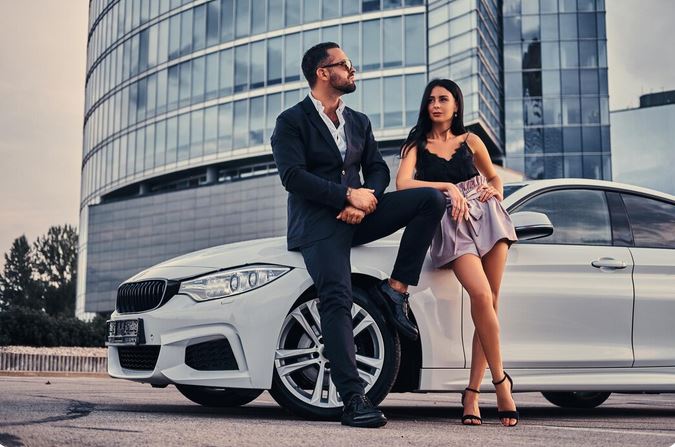
Luxury Cars as Status vs. Investment
Status motivates most purchases. According to Forbes, luxury vehicles function primarily as status symbols rather than financial investments.
Practical returns rarely justify costs. Factor in depreciation, maintenance, insurance, and opportunity costs, and luxury cars destroy wealth financially.
Emotional returns matter tremendously. The joy, experiences, and memories generated often outweigh pure financial considerations for buyers who can truly afford them.
The Future of Luxury Cars in Kenya
Kenya’s high-end automotive market continues evolving with global trends and local adaptations.
Electric Luxury Vehicles Coming Soon
Porsche Taycan leads electric luxury. This all-electric sports sedan delivers supercar performance with zero emissions, though charging infrastructure limits adoption.
Mercedes EQS represents electric luxury sedans. The flagship electric S-Class alternative offers 478 km range, though few Kenyans have purchased due to charging concerns.
BMW iX competes in luxury electric SUVs. Its futuristic design and 425 km range appeal to environmentally conscious wealthy buyers.
Infrastructure development remains critical. Without widespread fast-charging networks, electric luxury adoption will lag despite environmental benefits.
Hybrid Technology in High-End Segment
Plug-in hybrids dominate luxury efficiency discussions. Models like the Porsche Cayenne E-Hybrid and Range Rover PHEV provide performance with reduced fuel consumption.
Tax incentives could accelerate adoption. Government policies favoring low-emission vehicles might make hybrids financially attractive beyond environmental considerations.
Battery replacement costs concern buyers. After 8-10 years, hybrid battery replacement costs of KES 2-4 million diminish resale values.
Customization and Personalization Trends
Bespoke programs allow ultimate personalization. Rolls-Royce Bespoke, Bentley Mulliner, and Porsche Exclusive Manufaktur create truly unique vehicles.
Kenyan buyers embrace customization. From custom paint colors to personalized interior materials, wealthy owners create vehicles reflecting individual tastes.
Costs escalate quickly. Bespoke options can add 20-50% to base prices, with extreme customizations doubling vehicle costs.
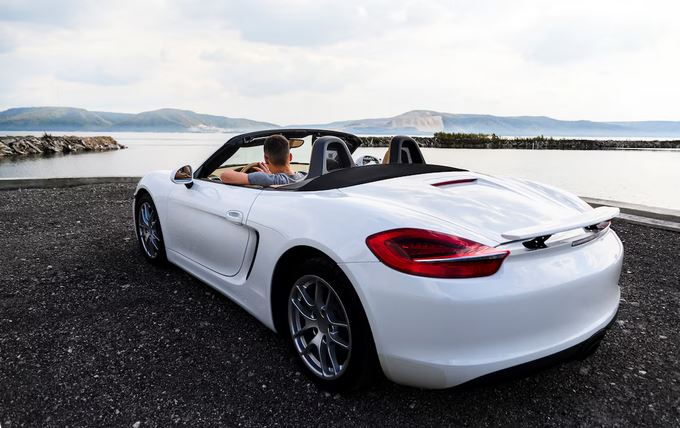
Read Also:
FAQs
What is the most expensive car ever sold in Kenya?
While exact private sale figures aren’t publicly disclosed, the most expensive cars in Kenya include the Rolls-Royce Phantom and Bentley Mulsanne, with prices ranging from KES 100-150 million. Some customized, armored luxury vehicles owned by high-profile individuals may exceed these figures, but such transactions remain confidential.
How much do import taxes add to luxury car prices in Kenya?
Import taxes can add 60-90% to a luxury vehicle’s international price. This includes 25% import duty, 20-35% excise duty depending on engine size, 16% VAT, and various fees. A USD 200,000 car internationally can cost KES 50-60 million in Kenya after all taxes and clearance costs.
Are luxury cars practical for daily use on Kenyan roads?
Most luxury sedans and SUVs handle Kenyan roads adequately, though low-slung supercars struggle with speed bumps and potholes. Vehicles like Range Rover, Mercedes G-Class, and Lexus LX combine luxury with practicality. Exotic sports cars like Lamborghinis and Ferraris work better as weekend vehicles due to ground clearance issues.
What are the annual maintenance costs for a KES 50 million car?
Annual maintenance for ultra-luxury vehicles typically ranges from KES 2-5 million, including routine services (KES 500,000-1 million), insurance premiums (KES 2-3 million), fuel costs (KES 300,000-600,000), and miscellaneous repairs. Exotic supercars requiring specialized technicians can exceed KES 7 million annually.
Do luxury cars appreciate in value in Kenya?
Most luxury cars depreciate 50-70% over five years. However, limited production supercars like Ferrari special editions, classic Porsches, and rare Lamborghinis can maintain or increase value. The Kenyan market’s small collector base means appreciation is less common than in established markets like the US or Europe.
Where can I test drive expensive cars before buying?
Authorized dealerships like Porsche Centre Nairobi, DT Dobie (Mercedes-Benz, BMW), and CMC Motors offer test drives for serious buyers. For ultra-exclusive models, dealerships often arrange private viewings and test drives. International test drives are sometimes arranged for ultra-high-net-worth buyers considering bespoke vehicles.
What’s the best luxury SUV for Kenyan terrain?
The Range Rover SVAutobiography and Lexus LX 600 excel on Kenyan terrain, combining luxury with genuine off-road capability. The Mercedes-AMG G63 offers extreme off-road ability with status appeal. For city-focused buyers prioritizing comfort, the Mercedes-Maybach GLS or BMW X7 provide supreme luxury with adequate ground clearance.
Can you finance luxury cars through Kenyan banks?
Kenyan banks rarely offer direct financing for vehicles exceeding KES 20 million. High-net-worth buyers typically use asset-based lending against investment portfolios, properties, or business assets. Some premium dealerships arrange specialized financing through private lenders, though interest rates exceed standard auto loans due to depreciation risks.
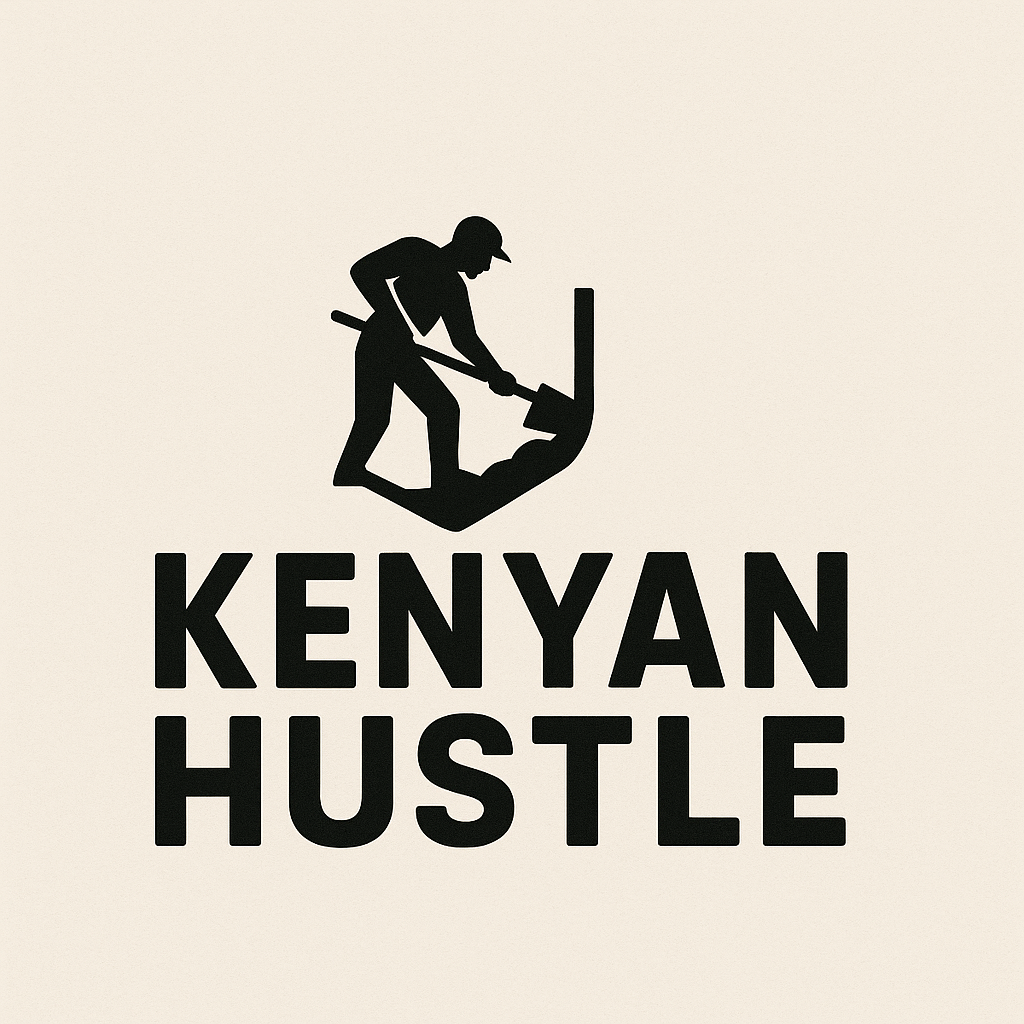

Leave a Reply